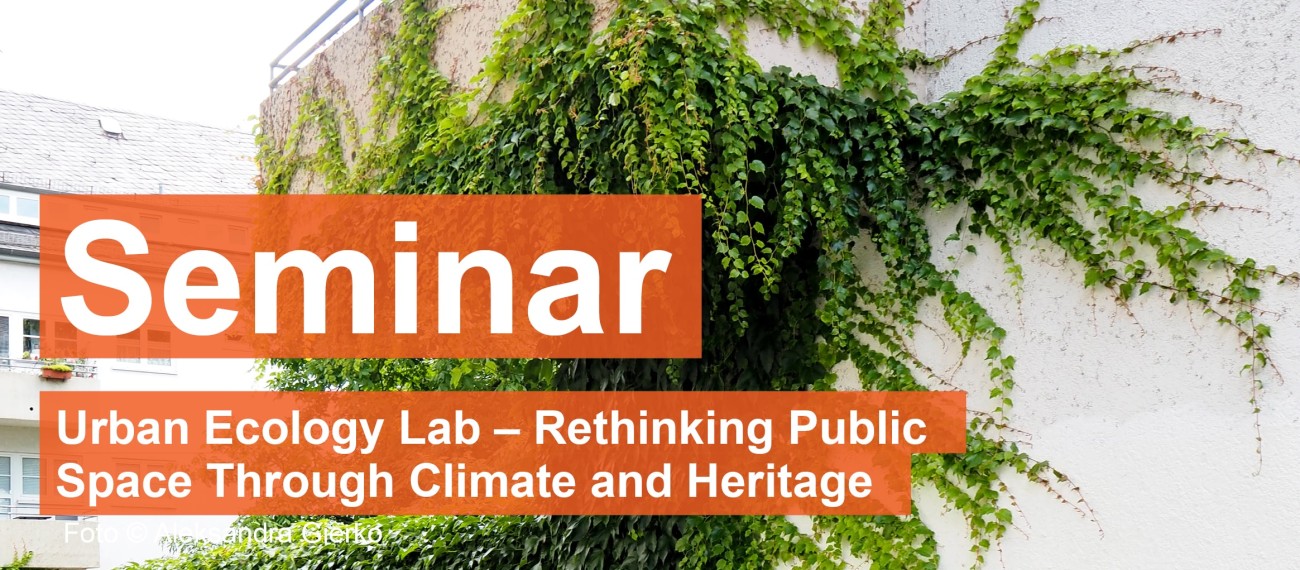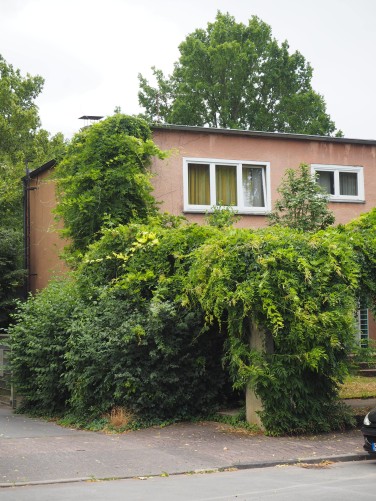Urban Ecology Lab – Rethinking Public Space Through Climate and Heritage of The New Frankfurt
Seminar + additional Stegreif (2CP) possible
(also possible as Fachmodul E)
Start: Friday, October 17, 2025, at 10:00 a.m. at the Department of Design and Open Space Planning
End of the Seminar: Friday, January 23, 2025
CP: 3
Supervisor: Dr. Aleksandra Gierko
Contact: gierko@stadt.tu-darmstadt.de
Formal requirements: Final presentation and poster with historical background, inventory of blue and green infrastructures, perspective view and other sketches, field observations, simulations + data set of the field and digital measurements
Course Contents:
This semester’s Urban Ecology Lab invites students to explore how lessons from the past can inform climate-resilient and socially inclusive cities of the future. Inspired by the 1920s New Frankfurt program led by Ernst May, the seminar examines how historic approaches to greenery, water, and public space can guide strategies for thermal comfort and sustainability today. In the first phase, we will conduct immersive fieldwork in Frankfurt’s historic housing estates and public spaces. Through guided site visits, mapping, and on-site discussions, students will analyse how early 20th-century planners integrated nature into urban design. The second phase moves into digital experimentation: creating 3D models and running microclimate simulations using real climate data. These “digital twins” will allow students to test design interventions and assess their effects on environmental performance. The course concludes with a one-week design studio, where participants will develop and iterate projects that improve microclimates and everyday urban experience. This interdisciplinary seminar combines historical research, field observation, and digital tools to rethink public spaces for a liveable, climate-conscious future. All backgrounds welcome.
Phase 1: Understanding the Site
Students begin by researching the history of the site and its broader urban context, with a focus on historical green and blue infrastructures. This phase also includes an inventory and analytical work to understand the existing conditions. Excursion and visit in the museum will help to broaden the context.
Phase 2: Modelling and Field Study
Participants create a digital model of the site using Rhino and ENVI-met. Alongside this, they conduct a field study to observe local climate conditions, as well as people’s behaviour and thermal comfort in the chosen public spaces.
Phase 3: Simulation and Reflection
In the final phase, students run winter simulations and compare the results with their field observations. This comparison fosters critical thinking about the relationships between measured and simulated data.
Additional Stegreif (2CP) possible:
With the Stegreif students can explore a microclimatic potential of the historical spaces in an extreme warm conditions. They can also test the chosen site with their own design to get acquainted with thermal potential of different green and blue solutions. The basic knowledge of ENVI-met tools is needed, so one shall learn it from the video tutorials if he or she is not attending the seminar.
12.12.2025 12:00
Start: Friday, December 12, 2025, at 12:00 a.m. at the Department of Design and Open Space Planning
End of the Stegreif: Friday, January 23, 2025
CP: 2




